|
Bangor Lot 03
(there are so many Bangor lots I'm running out of unique names)
postcards, photos etc. no specific family name
Postcards
 
 
1
2
1) 26th May? 1967 Postmark Bangor to Miss Marian Wade, c/o Hotel Zenith,
Lido Di Jesolo, Italy - 'Rosemount' Dear Marian, Hope you are having a
lovely time. We are all well & going on as usual. Weather is still
changeable with us, hope it is nice & sunny for you both. Love from all,
Lily xx
2) 24th August 1975 Postmark Belfast to Miss M. Wade, c/o 47 Locke Avenue,
St. Thomas, Ontario, Canada - Saturday. Many thanks for card received
today. Glad you had a lovely flight, hope the weather is warm & dry for you.
I'm sure you will have a marvellous time. We are all O.K. Waiting for all
the news. Love to everyone from all here. Love Lily
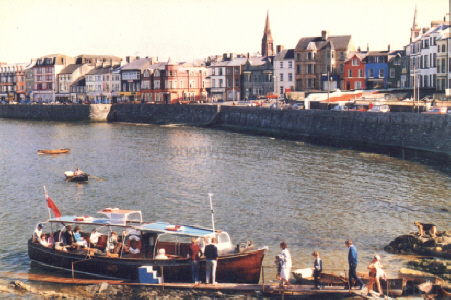
 
1
2
1) 'A trip round the bay, Bangor' Photographer R. J. Kelly
2) 18th ? 1973 Postmark Calgary, Alta to Miss M. Wade, 21D Melfort Drive,
Tullycarnet, Belfast, N. Ireland - Calgary, Friday. Dear Marian,
Arrived safely, lovely flight, V.I.P. treatment. Everybody well & I got a
great welcome. Arrived C. at 11.20 p.m. C. time. Will write all the news
later. Hope you are O.K. Lots of love from all. Lily xxx
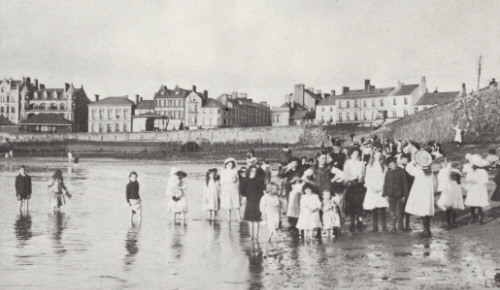
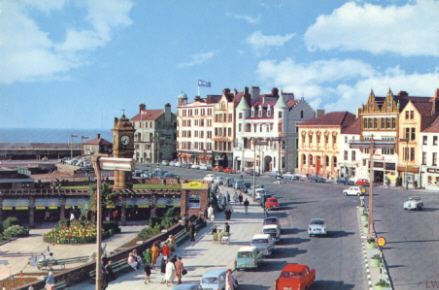
1
2
1) 'Paddling in Bangor Bay about 1900'
2) 'The Promenade and McKee Clock, Bangor
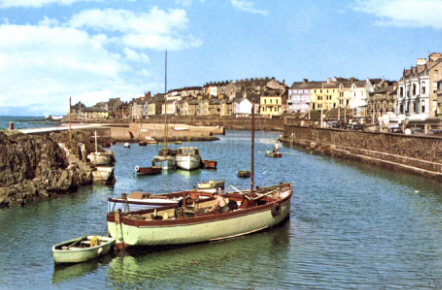
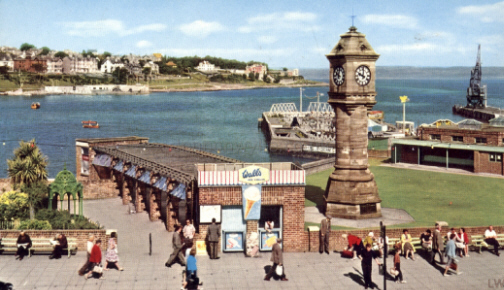
1
2
1) The Long Hole and Seacliffe Road, Bangor
2) -
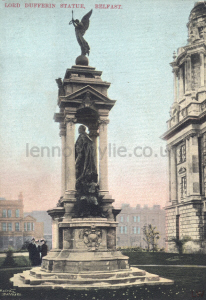 
 
1
2
1) 'Lord Dufferin Statue, Belfast' - 2nd October 1914 Postmark Great Harwood
to Mrs. Vogwell, Chapel Lane, Hoghton, Preston - Friday Oct 2/14 Dear
Georgy, Pleased to hear Mother is so much better. What a lot of Blackberries
you got ? I will come tomorrow afternoon and bring Mrs. F. If it is fine we
shall walk from Cheayten? get in Hoghton about 3.30. Father does not think
he will be able to come on account of his club man coming. Love to all
Janie?
2) 'Clandeboye (Co. Down)' - 19th January 1906/19th January 1906 Postmarks
Stockholm/London to Monsieur de Castro Feijo, Ministre de Portugal, Légation
de Portugal Stockholm Sweden Saltsjobaden, O.H. - Mon cher
Collegue, Je vous fais mes excuses de n'avoir pas déja répondu á vos
souhaits pour le monvel an. Moi et ma femme esoerons que l'am 1906 Sera
propice á vous et et á tous nos amis de. Stockholm Je vous serre la main.
Dufferin & Ava
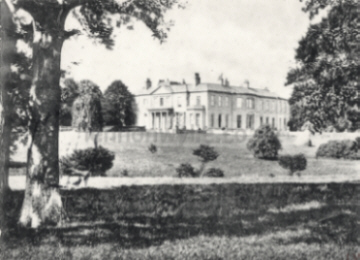  

1
2
1) Clandeboye (County Down) - 22nd December 1902 Postmark London to Monsieur
A. de Castro-Feijo, Legation de Portugal, Stockholm, Sweden - With best
wishes from both from Xmas. Dufferin
2) The Dufferin Drive, Clandyboy, Co. Down
Photos
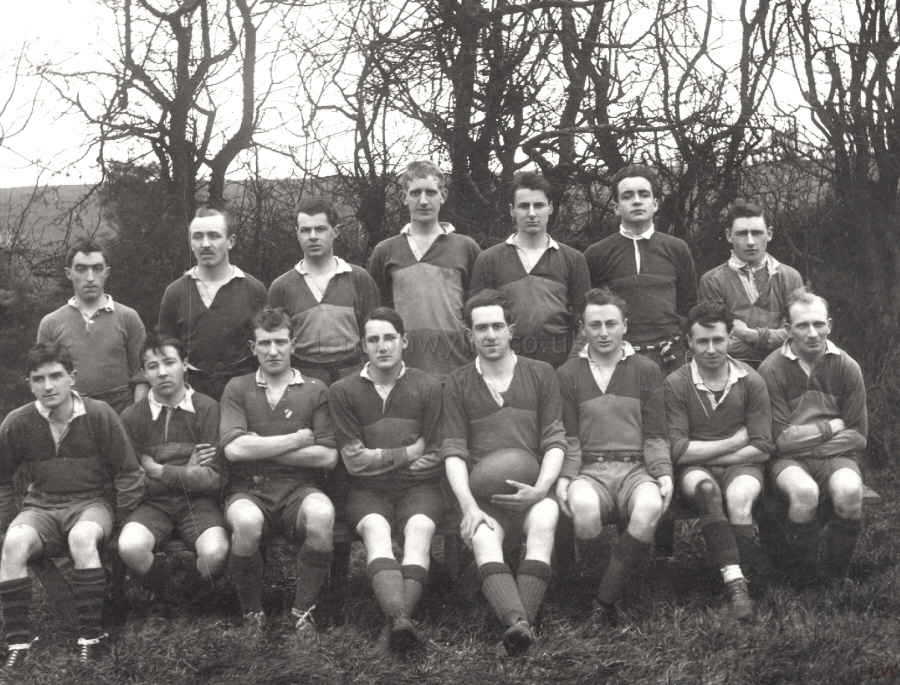
Bangor v Donaghadee - 1st Round Towns Cup 1922
Bangor 12 (1 goal, 1 penalty, 1 dropped) D'Dee 3 (1 try)

J. E. Oliver?, Kilkerran, 48 Killaughey Road, Donaghadee
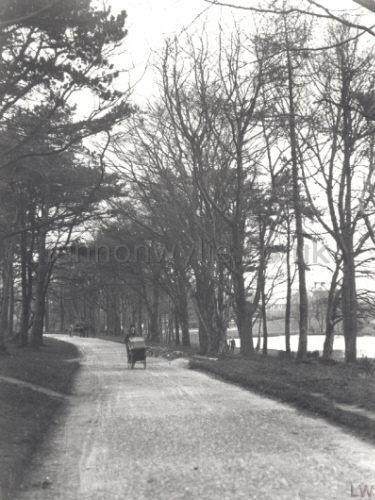
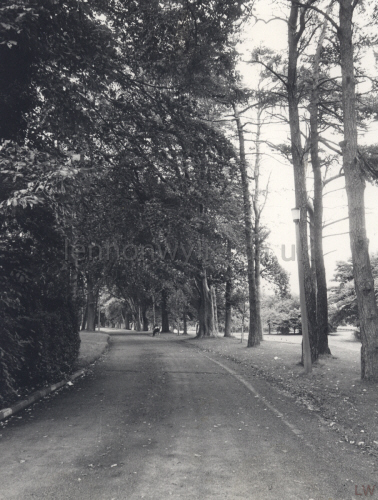
1911
(Ward Park)
1985
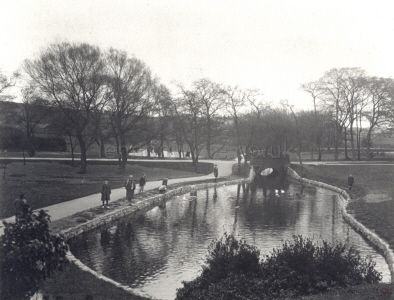
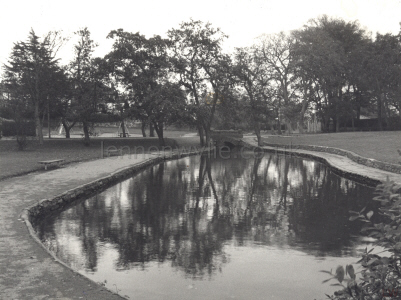
1911
(Pond ward Park)
1985
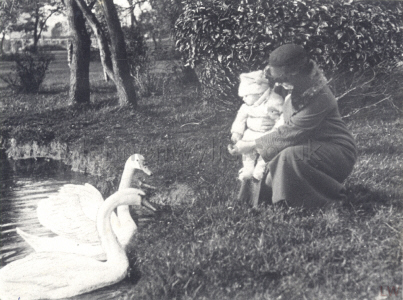
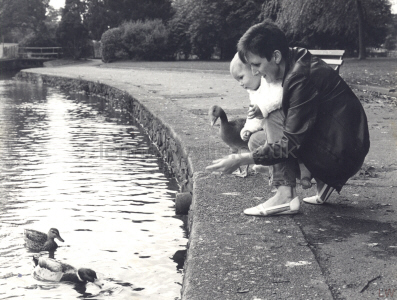
Mother & child Ward Park 1911
Karen Singleton & son ? Ward Park 1985
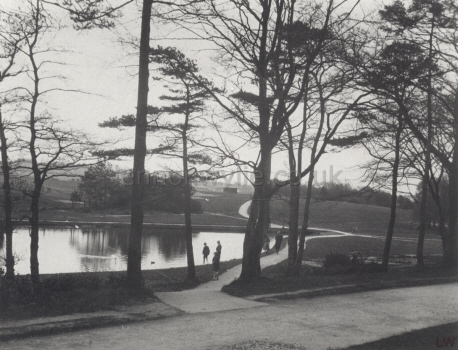
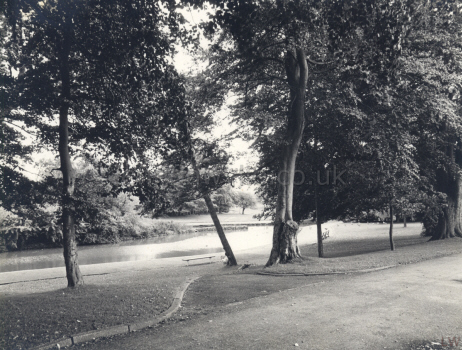
Top Pond Ward Park 1911
Top Pond Ward Park 1985
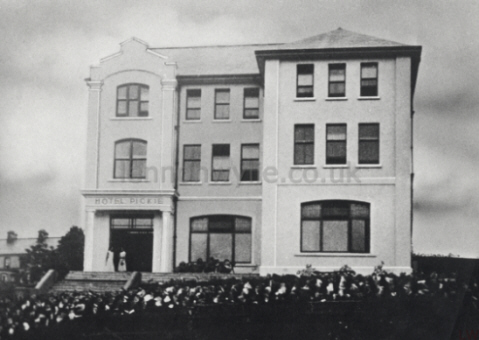

Hotel Pickie, Bangor
Castle Arms








1
2
3
4
5
6
7
8
1) Donaghadee?
2) Bangor from Pickie
3) ?
4) Pickie Pool
5) Bangor Beach
6) Piers Bangor
7) Six Road Ends
8) Pickie Pool? everything
else



 
 
 
1
2
3
4
5
6
1) 7th May 1920 Main Street Boys' School, Bangor, Down David
Orr, Head Master - I have much pleasure in expressing the high opinion I
entertain of Mr. Bob McCready, as to his ability, courtesy, and urbanity. As
a pupil and Monitor at this school he displayed far more than average
ability, and I sincerely hope the loyalty that prompted him to drop a
promising career in order to serve his King and country may not ? prove a
serious disadvantage now that his period of service has come to an end. I
can confidently recommend him to any position requiring a clear intellect,
with excellent reasoning powers and good initiative. David Orr (paper
watermarked 'Lindsay Gordon Extra Strong')
2) 22nd August 1939 Borough of Newtownards, Northern Ireland Air Raid
Precautions - This is to Certify that Margaret Kane, 88 Church Street, has
attended a course of Anti-Gas Training and passed an Examination in above
conducted under the authority of the Newtownards Borough Council and has
acquired sufficient knowledge of Anti-Gas measures to act as a member of a
public Air Raid Precautions Service. Date of Examination: 22nd August
1939 Air Raid Precautions Officer: James Martin Clerk of the
Council: John P. MacIlwaine?
3) 188? Ballymagee Street Lime Works
and Coal Yard, Bangor. Mr. Hugh Taylor Bought of James Montgomery,
Lime and Coal Merchant. Interest charged after One Month.
4) FREE PASS! The Lightship Bar. Proprietor: Brian Flannigan, Sea Food
Counter our Speciality, 2 High Street, Bangor. This Pass is not
transferable except top another person with MONEY.
A few FACTS that are interesting: Tennyson could take a sheet of paper and
write a poem on it with £1,300. That's GENIUS.
Rothschild can write a few words on a piece of paper and make it worth
£1,000,000. That's CAPITAL.
A navvy can move tons of earth a day and earn five shillings. That's LABOUR.
A mechanic can take a piece of steel worth £1 and make it into watch springs
worth £200. That's SKILL.
A man can run a business for a time and not advertise. That's FOOLISHNESS.
Solomon had hundreds of wives and slept with his father. That's WISDOM.
Some tradesmen do not study their customers. That's a MISTAKE. - The
LIGHTSHIP does. That's BUSINESS.
People wine and dine at the Lightship Bar. That's SENSE.
This PASS is good on all Buses and Rail-ways provided that the bearer walks,
carries his own luggage, swims all rivers, and stops for Drinks and Smokes
at..... TEN COMMANDMENTS! CLICK image to read them.
5) 1930 With the Compliments of S. B. Gaw, F.A.I., Estate Agent and Shipping
Agent, 59 Main Street, Bangor
6) G. H. Pidduck, High-Class Photographer, 19 High Street, Belfast. Also at
9 Queen's Parade, Bangor.
 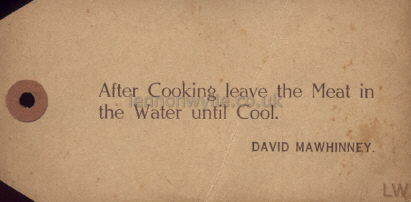
David Mawhinney, Flesher, 78 Main Street, Bangor - Suggestions as to cooking
Spiced Beef - A roll of 4 pounds will take 2 hours, and for each additional
pound add 20 minutes to time. It is important that the water is on the
boil before the beef is put in, and kept boiling slowly. By enveloping
the Roll in a paste of flour and water, tying in muslin and boiling as above
much of the juice of the meat is preserved. Some good cooks, instead
of boiling the Roll, bake it in an oven, first enveloping it in paste, thus
eliminating the boiling out of the juice. The paste is easily peeled
off after cooking. We supply Spice Beef Rolls in all weights from 5lb.
upwards. After Cooking leave the Neat in the Water until Cool. David
Mawhinney
 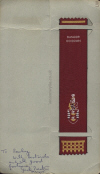 


 
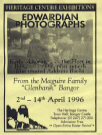
 
1
2
3
4
5
6
1) Bangor, Co. Down, Town Hall woven bookmark To Rowley with best wishes and
all good fortune, Jack Preston Mayor
2) Bangor Abbey
3) Ulster Post and Services Review
4) Bangor Abbey Through Fourteen Centuries Map
5) Heritage Centre Exhibition Edwardian Photographs from the Maguire Family
"Glenbank" Bangor 1996
6) Maguire Family Collection - Notes: Father was Dean Edward Maguire,
First Rector of St. Comgall's Parish Church, Bangor. Frederick George
married 1903 - Sirocco Works, Sir Sam Davidson & Co. Presented to Heritage
Centre by Miss Doreen

 
  
 

1
2
3
4
5
1) Welcome to Bangor Marina
2) The Bangor Harbour and Seafront Development Plan
3) Ministers of First Holywood Presbyterian Church 1615 - 1939
4) Bangor Seafront Development Scheme - Surely the optimism of the "North
Down Herald" of 17 July 1891, describing the improving town, is once again
relevant. "Men of capital and enterprise are turning their eyes towards
Bangor and saying 'Behold! Here is a goodly place!' ".
5) Bangor Parish Church Organ Recital by Mr. E. H. Emery, Mus. Bac.,
F.R.C.O., F.T.C.L. 6th September 1936. Soloist Miss Jean Magrath.
 
  

1
2
3
1) North Down Borough Council Ward Park Wildfowl Trail (to May with love
Ronnie Russell)
2) From Log Cabin to Whitehouse, The Story of President Garfield's Life by
William M. Thayer - Bangor National Schools, Boys' School Manager Rev. R. J.
Morrell awarded to Campbell Robertson for having obtained First place for
the careful preparation of Home and School Work. Jas. Millen, Principal.
"Spectator" 22-4-13
3) 1933 Postmark Belfast to Mr. Andy Johnston, Pickie Bathing Place, Bangor,
Co. Down
  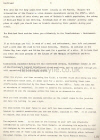  
The Ulster Way: Crawfordsburn to Conlig
The Holywood - Crawfordsburn section of the North Down
Coastal Path, which is detailed in the North Down Borough Council
publication "The North Down Coastal Path" is also part of the long
distance public footpath which encircles the province, The Ulster Way.
To explore the beautifully changing landscape of North Down, full
advantage can thus be taken by combining the Coastal Path walk and the
Crawfordsburn - Conlig section of the Ulster Way. On leaving the
Coastal Path at Crawfordsburn Country Park, where nature trails, can be
obtained at the Park Centre, a well marked route through the Glen will
take you to the quaint village of Crawfordsburn, where refreshments can
be taken and local crafts purchased.
To continue your journey retrace your steps back to the
point of exit from the park and follow the Ballymullen Road, then turn
left into Meadow Way. Having passed the modern residences you find
yourself walking along an old hawthorn hedgerowed "loaning", a loaning
being the Ulster dialect for lane. The clump of trees standing
ahead, to your left, is The Jan Meyan clump, which commemorates the
perilous landing on the rarely visited Arctic Island of that name by
Frederick Temple Blackwood, the first Marquis of Dufferin and Ava, in
the summer of 1856 during his Arctic voyage in the schooner yacht
'Foam'. On approaching the island their first glimpse was of the
magnificent mountain "Becrenberg" which seemed to tumble about their
heads enveloped in a pearly vapour from underneath and from whose
floating folds seven enormous glaciers rolled down into the sea. The
schooner was then becalmed and a fog descended which was so dense that
in such conditions it was easier to hear land than to see it. Once
the fog had lifted and the wind had become more favourable then began
the dangerous navigation through packed fields of ice floes. Following
several unsuccessful attempts they eventually managed to land, taking
with them the discarded ship's figurehead, a white ensign, a flagstaff
and a tin biscuit box containing a sheet of paper bearing the schooner's
name, the date of arrival and the names of all on board. After great
difficulty the figurehead was set into a crevice in a cove which was
subsequently christened Clandeboye Creek.
As you continue along the loaning look to your right
and you will see another group of trees, The Malaprop Clump. Planted
during the same period it is named after Mrs. Malaprop, a character in
the play "The Rivals" written by the famous Irish playwright Richard
Brinsley Sheridan, a great-grandfather of the first Marquis. Today Mrs.
Malaprop is remembered by the term "a malapropism" being a grotesque
misapplication of words or a word misapplied: a famous quote in "The
Rivals" of Mrs. Malaprop being. At the end of Meadow Way you
meet the main Bangor-Belfast dual carriageway. Cross the road at this
point, turn right and then left at the Gatehouse which was erected in
1855. This is one of the entrances to Clandeboye Avenue. This beautiful
tree-lined avenue was constructed and planted by Lord Dufferin in the
1850's as a carriageway connecting the family home of Clandeboye House
with Helen's Bay, named after his mother.
As you dander along its length you will pass clumps and
screens of deciduous woodland trees with christened names such as
Montreal, Tadousac, Toronto, Niagara and Ottawa, all in memory of the
time Lord Dufferin spent as Governor-General of Canada (1872-1879)
Watch out for the acrobatic antics of the blue tits and for the flocks
of long-tailed tits. The derivation of the word 'tit' is from the Norse
meaning 'small bird'. In winter one can hear the determined territorial
call of the Robin whilst in spring the avenue is resplendently decked
with a mixed covering of primroses, violets and bluebells.
Although the full length of the avenue extends for two and a half miles
it is necessary to divert from the avenue and turn right, following
another hedgerowed loaning which passes through undulating farmland
where, in the adjoining fields, you can observe flocks of rooks and
lapwings feeding. The end of this lane takes you on to the
Ballysallagh Road (Bangor-Belfast via Craigantlet).
At this juncture continue straight on across the road
and proceed along a lane which will lead you to a tree belt named the
Long Wood and Westland Wood. At this point you can continue the Ulster
Way or alternatively follow the path along Ladies Drive leading to Cairn
Wood at the top of Craigantlet. This mixed broadleaf belt can be
traced back to the 17th Century, being clearly shown on Thomas Raven's
Map's of 1625 (which are on display at the Heritage Centre, the Town
Hall, Bangor.) As you pass through Westland Wood you will notice a
decrease in the underlying vegetation, which has been kept short by the
frequent grazing of the wood's rabbit community. This area has for
many years been known locally as the Warren, Despite the introduction of
the flea-borne virus desease myxamotosis during the 1950's, which caused
the death of over ninety per cent of Britain's rabbit population, the
colony of Westland Wood is now thriving. Although most of the rabbits'
activity takes place at night you should have no trouble observing their
gambols during your stroll. The Westland Wood section takes you
ultimately to the Crawfordsburn - Newtownards Road.
If at this stage you feel in need of a meal and
refreshment, turn left and proceed half a mile down the road to the
local hostelry. However, to continue on the Ulster Way turn right and
follow the road for a quarter of a mile. It is here that you enter the
main grounds of the Estate of the Marquis of Dufferin and Ava:
Clandeboye. Extensively replanted during the mid nineteenth
century, Clandeboye Estate is one of the Province's largest broadleaved
mixed woodlands, and as you walk through you will appreciate its
outstanding beauty. After the styles, and then crossing the field,
a further style will bring you into an attractive beech wood, an ideal
spot for a picnic, overlooking Tower Lake artificially constructed by
the first Marquis in the 1860's. Today the lake has an abundance of
waterfowl. In order to observe the mallards, pochards etc. it is
advisable to use the causeway across the lake as an observation site.
Once the have crossed the causeway continue up the slight slope to the
junction and take the turning to your right. The area behind the
deer fence to your left has been recently cleared of trees; however by
careful examination you can see alder, coppiced in 1984. It is
planned to replant this area in the near future.
The majestic tower to be seen on the hilltop to your
left was originally commissioned by Lord Dufferin, the first Marquis, on
attaining his majority in 1847 and designed by his architect William
Burn. It is believed that it's construction along with that of Tower
Lake was to relieve the chronic hardship which followed the great
famine, the effects of which concerned the first Marquis deeply.
Originally built as a 'gamekeeper's tower' and completed in 1848, it was
officially christened Helen's Tower on November 20th 1850 as a token of
Lord Dufferin's filial devotion to his mother, Helen Selina Sheridan,
Baroness of Dufferin and later Countess of Gifford. The interior was not
finally completed until October 23rd 1851. Built in the revival
style of the Scottish fortified towers of the 16th and 17th centuries,
the Tower stands resplendently encircled by Scots Pines.
Such is the renown of this great Ulster landmark, a
replica, erected by public subscription, now stands at Thiepval in
Northern France in deference to the men of Ulster who fell during the
five month carnage of the Battle of the Somme in 1916. Many of the
fallen Ulstermen had spent their last days on Irish soil, prior to being
posted to France, at the training camp at Clandeboye. As you enter
the woods below the Tower you can glimpse the white rump of the fallow
deer running through the wood. The herd of fallow in the Estate
are relative newcomers. During the 1940's some fallow escaped from
nearby Portavoe and established themselves at Clandeboye. The
descendants of those escapees now number around fifty and although they
may be seen feeding at any time dusk and dawn are more favoured as they
tend to rest and ruminate during the day. The most exciting time of the
year to observe them is during the rutting or mating period (October -
November) when the bucks (males) will herd together groups of does
(females) and engage in fierce fighting with rival bucks.
Also to be seen along this section are red squirrels,
our true native squirrel. Sadly, population numbers of red squirrels
have declined over the years. It is commonly thought that this species
has been out-competed by the introduced Grey Squirrel; however, their
numbers seem to be controlled by the seasonal availability of the food
crops of their preferred conifer habitat, although they thrive best when
there is a mixture of tree species giving them a full range of food
types. During a bad season the numbers will subsequently decline and may
take many years to recover. If, in the interlude grey squirrels
establish themselves in the area it is generally to the detriment of the
red squirrel. The best time to observe the antics of these little
animals as they scurry round for food is shortly after dawn. Further
contrary to common belief squirrels do not hibernate and can often be
seen in midwinter as they cannot go without food for more than a few
days. During the winter months the coat is chocolate brown to grey.
As most of the squirrels' time is spent in the treetops you also have
the opportunity of observing the many species of woodland birds, whilst
overhead you may catch sight of a hovering bird of prey as it searches
for a victim.
At the 'T' junction after passing by Helen of Netherby's wood you have the option of turning left and taking the path
into the village of Conlig, or turning right to see the remains of the
Conlig and Whitespots lead mines. Thriving for less than forty years the
mining industry of the area, which at its peak employed up to four
hundred people, came to a debatable end at a London auction room in
1865. The Ulster Way then continues into the Borough of Ards.
We do hope that you have enjoyed your walk and that these accompanying
notes have been of interest!
          
Gilbert & Sullivan Princess Ida, Belfast Operatic Company at the Little
Theatre, Bangor




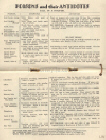




1931 Ucal Year Book and Medical Guide with the compliments of :- S. H.
Forrest, L.P.S.I., Dispensing Chemist, Central Pharmacy, 44 Main Street,
Bangor
Table of Contents: Disease and Illness, Prevention and cure of - Eclipses -
Foreword - Giants in Sports - Holidays - Index, General - Infectious
Diseases (Isolation Table) - Medical Guide - Medicine Cupboard - Medicine,
How to Prevent the Nauseous Taste of Medicine, The best way to give and take
- Monthly Calendar, 1931 - Nursery Necessities - Nursing the Sick, Hints on
- Phases of the Moon - Poisons and their Antidotes - Quarter Days - Ucal
Specialities, Selected List of - Weights and Measures, Table of - Weather
Table - Weather, Natural Signs - Why to deal with a Qualified Chemist - Year
in the Garden


































Dufferin Memorial Hall, Neptune Bazaar, Selected Quotations, Bangor July
1906
The object of this little Souvenir of the "Neptune" Bazaar will have been
attained if it proves interesting reading, and a modest sum be realised from
its sale to assist in reducing the debt on the beautiful Parochial Hall
erected by the parishioners of Bangor to the memory of the late illustrious
Marquess of Dufferin and Ava. To all those who contributed quotations,
and generously subscribed to the Booklet, my sincere thanks are owing. The
Compiler. St. Helen's, Bangor, Co. Down, July 1906







Contributors: The Marquess of Dufferin and Ava; The
Earl and Countess of Aberdeen; Hariot Dufferin and Ava; Rt. Hon. Thomas
Andrews, D.L.; Marchioness of Londonderry; Dean of Down Edward Maguire,
D.D.; Lady Clanmorris; Sir James Henderson, M.A.; Rev. J. Irvine Peacocke,
B.D.; Miss Connor; Harriette E. Lepper; Sir William Ewart, Bart.; Rev. W. H.
Bradley, M.A.; James McQuitty; H. P. McCann; W J. McGuffin; W. Maxwell,
I.C.S.; Elizabeth Maxwell; Richard Purdon, M.D.; Dr. & Mrs. John Gorman; E.
Preston; E. B. McGuffin; Kathleen Maxwell; Mary J. Harper; Elsie McGuffin;
Andrew Harper; C. E. Preston, M.D.; Mrs. Aiken; J. Clarke Steen; F. M.
McMillan; Denis McMillan; J. Patrick, M.B.; Ettie Hazley; Robert Geddes;
John Currie; S. McCann; A. Currie; D. Harper; Jas. Robertson, D.D.;
Elizabeth McBride; Dr. James Browne; H. E. Carter; Alfred N. Harper; Mabel
P. Harper; M. Reid; Belle Dalziel Absolom; Samuel Harvey; Emma Carter;
Lizzie Wilson; Thomas Lavery; Samuel C. Hunter; E. Stewart; Mildred Harvey;
M. McVicker; John McVicker; John Johnston; Martha Harte; M. Burnside; Isobel
Reid; H. N. Reid; John A. Burnside; Cassie Barron; William Thompson; Mary
Barron; N. Stanley; Hugh Jackson; Marie McRoberts; Rev. E. F. Campbell; Mrs.
Mahaffy; Jessie McComb; Mrs. Zachary; M. G. Stewart; G. Walter Bradley; E.
F. Mercer; Edith M. Harper; Margaret Weatherall; Mrs. T. B. Gorman; Amy R.
Harper; Margt. McCartney; Annie Marshall; H. Hilland; F. W. Moneypenny,
M.V.O.; William Hanna; Mrs. T. Hamilton; M. Wilson; Alfred Wilson; F.
Mahaffy; M. Cotton; Reba D. Ireland; Isabel McCann; M. M. Hicks; W. R.
Hicks; P. W. McComb; Sam Martin; Mrs. H. McCann; C. C. Cotton; Mary E.
Hughes; Margt. Taylor; W. J. Clifford; Canon Spence, D.D.; Mrs. Spence; E.
L. McMeekin; M. J. Hicks; R. Gageby, J.P.; R. McIlroy; Annie McIlroy; Thea
I. Hicks; James Neill; Susan McCleery; Rev. Wm. Dowse, M.A.; May McIlroy;
Grace McIlroy; C. T. Millard; Martha Millard; Margaret Bailey; Jackie
Hazley; Marie Mathews; A. MacDonnagh; W. Hazley; J. B. R. Harper; James
Harper; J. N. Brice; Francis Brandon; H. B. Brandon; James Barron; Jane J.
Raymond; Gibson Barron; M. E. Dunn; Annie Gibson; Elizabeth McIlroy; Annie
Harper; Willie McBride; Kennedy Stewart; J. T. Gibb; Sara Gibb






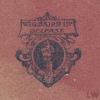
   
Ecclesiastical History of Bangor
Bangor has a remarkable place in the legendary remains
of Ireland, but it was not until some time after the introduction of
Christianity that it became of importance. About eighty-four years after
the landing of St. Patrick, in the year 432, St. Comgall, who was the
founder of Bangor, was born at the pace now called Magheramorne on the
shores of Larne Lough. Comgall studied at Clonard, Glasnevin, and
Clenenagh, then celebrated schools. After teaching for some seven
years in Ulster, he settled, in the year 555, at the place then, as now,
known as Bangor. He built a church and established a monastery
comprising not merely a church, but a college and schools, a mill, and
everything else that was needed for the support of the community.
Comgall's settlement grew from year to year, until, it is said, 3,000
souls were under his care. He framed rules for the guidance of his
community, the fame of which spread far and wide. Bangor under Comgall,
was wonderfully successful as a missionary college. He sent out bands of
missionaries to Britain and over the whole continent. Columbanus, his
most distinguished pupil, went to the Continent with a number of
companions, and there founded churches amongst the Franks, Suevi, and
Allemani. St. Gall, another pupil and a companion of Columbanus,
preached in Switzerland, and gave his name to one of the Swiss Cantons.
To this day the name of the Canton of St. Gall bears testimony to the
work done in Bangor more than a thousand years ago.
The later traditions of the greatness of Bangor under
Comgall are summed up by Bernard, in his "Life of Malachy," thus - "For
in the early times there had existed in this place, under the founder,
Comgall, a most noble institution, the parent of many thousand monks,
the head of many monasteries; a place it was, truly sacred, the nursery
of saints, who brought forth fruit most abundantly to the glory of God,
insomuch that one of the sons of that holy congregation, Luanus by name,
is alone reputed to have been the founder of a hundred monasteries,
which I mention that the reader may from this single instance, form a
conception of the number to which the remainder of the community
amounted. Nor was it only into the countries I have mentioned, but even
into distant lands, that crowds of saints, like an inundation, poured -
one of whom, St. Columbanus penetrated into these our regions of Gaul,
built the monastery of Luxeuil and there became a great multitude."
Bangor was called Bangor Mor, or the Great, to
distinguish it from Bangor in Wales, called Bangor Britonum, or "of the
Britons." It's antiquity as a Christian Church will be understood when
it is remembered that at the time of Comgalll's death in the year 602,
Augustine, the first missionary from Rome to Saxon England, was but
three or four years in the country. Indeed, he is only recognised as
Archbishop of Canterbury the year before (601). Bangor, therefore
as a Christian settlement, is older than Canterbury by nearly fifty
years. About this time, a Bangor man, Bishop Dagan, created no
small stir in England. Being in that country, he met Laurence,
Archbishop of Canterbury, the successor of St. Augustine, and two other
bishops. On account of the difference between the Roman customs and
those of the Celtic Churches of Britain and Ireland, he refused to have
communion with these bishops, or even to be in the same house with them.
Laurence thereupon writes a letter to the Irish Bishops and Abbots
expressing his surprise. It is preserved by the historian of the English
Church, the Venerable Bede :-
"To our most dear Brothers, the Lords Bishops and
Abbots throughout all Ireland, Laurentius, Mellitus and Justus, servants
of the servants of God- "When the Apostolic See, according to the
universal custom, which is followed elsewhere, sent us to these western
parts to preach to Pagan nations, we came into this island, which is
called Britain, without possessing any previous knowledge of its
inhabitants. We held both the British and Irish in great esteem for
sanctity, believing that they had proceeded according to the custom
of the universal Church; but, becoming acquainted with the errors of the
Britons, we thought the Irish had been better, but we have been informed
by Bishop Dagan, coming into this aforesaid island, and the Abbot
Columbanus, in France, that the Irish in coming to us, not only refused
to eat with us, but even to take his repast in the same house where we
were entertained."
An interesting notice of the influence that Bangor had
upon the music of the church occurs amongst the addenda to the first
volume of O'Corry's "Manners and Customs of the Ancient Irish," by
Professor W. K. Sullivan. Amongst other statements, the following is
quoted - "St. Wandilochus, being sent thence (from Bangor) forth as a
preacher by St. Comogill, as also St. Columbanus, they arrived at
Louvaine, in Gaul, and there they changed the same service (that
ascribed to St. Mark), and thence the fame of their sanctity was spread
over the earth." With the eighth century closes the period of
ancient Bangor's greatest ecclesiastical prosperity. Continuous services
were kept up night and day. Ita ut ne momentum quidem diei ac noctis
vacaret a laudibus: but soon the record becomes one of desolation and
decay.
At the beginning of the eighth century the costs of
Britain and Ireland were desolated by the ravages of the Danes and
Norweginas. These hardy and ruthless rovers massacred the Christian
communities, burnt the Churches, and drowned" the books. They stripped
the books of their rich ornaments, and sunk the volumes in the nearest
stream. Bangor lay in their very course. Soon their long keels, full of
armed men, touched its sands, and from that time the ecclesiastical
glory of Bangor departed. In 810, Bangor was wasted by the Danes,
and the shrine of Comgall broken open, and its learned men and bishops
smitten with the sword. In 822, it is again noted, Bangor was plundered
by the Danes, and the reliques of Comgall scattered. Abbot Malachy
was appointed Abbot in the year 1120, when only twenty-five years of
age. He was one of the most energetic Churchmen of that century. Under
him Bangor quickly revived. His biographer, St. Bernard, draws a vivid
picture of its desolation when he assumed office. The temporalities were
in the hands of a layman. These were restored. He built a wooden church,
after the Irish fashion, of planed planks, and afterwards proceeded to
erect one with lime and stone. Bernard represents that the building of
the stone church occasioned some popular feeling. The inhabitants were
astonished. A crowd, critical, and, it maybe, somewhat hostile,
gathered. One cried - "O worthy man, what is your motive in introducing
this novelty into our neighbourhood? We are Scots, not Gauls. Why this
vanity? What need of a work so extravagant, so aspiring?" Hardly a trace
remains that could be possibly identified as part of Malachy's
"extravagant" and "aspiring" work.
A nomadic race who came to Ireland from Spain, whither
they are supposed to have come from Greece and Egypt, the Scots of
Ireland subjugated the Picts of Britain, and gave the name Scotland to
the northern portion, then known as Caledonia. It is remarkable
that there are no ancient Celtic tombstones in Bangor churchyard. From
the remains existing at Clonmacnoise and Iona, we see that it was the
custom to place a stone, sometimes beautifully ornamented, over the
grave of every eminent ecclesiastic. There must have been hundreds
of such stones at Bangor bearing inscriptions in Irish. Only one early
tombstone has been found. It is now preserved in Lord Dufferin's Chapel
at Clandeboye. Perhaps the Scottish settlers, under Sir James Hamilton,
at the beginning of the seventeenth century, found them valuable
material for building purposes. Careful examination might discover
traces of them in the fabric of the old Abbey Church, which was built by
them about the year 1617.
We have from this time forward few notices of
ecclesiastical Bangor, and those that remain are such as show us the
great change which, in the course of years, had taken place. In
1469, the Abbey, being now fallen into ruins, Pope Paul II directed the
Franciscans to take possession of it, which was accordingly done by
Father Nicholas. In the reign of Henry VIII the Monastery of
Bangor shared in the general dissolution of the religious houses.
William O'Dornan, being then Abbot, rendered up the property of the
Abbey to the King. In the thirty-third year of Henry VIII, we find
that Bangor Abbey, with several other suppressed houses in County Down,
was granted in capite to Gerald, Earl of Kildare, and Mabel, his wife.
This grant either did not take effect or wad resumed by the Crown, as
the same was granted to James Hamilton, in the reign of King James I.
In the reign of this King, we read that John Gibson,
M.A., was Incumbent of Bangor and Dean of Down. His tombstone, still
remaining in the Old Abbey Church. bears this excellent testimony -
"Here lyes beloue and learned and Reverend Father in Godes Church,
Master John Gibson, sence Reformacione from Popery the first Dean of
Downe, sent by His Majestie into this Kingdom, and received by my Lord
Claneboy, to be preacher at Bangor. At his entry had XL communicants,
and at his departour this Lyf, 23 of Junii, 1623, left 1,200, being of
age 63 years. So Christ was his advantage both in lyfe and deathe."
The Lord Claneboy, better known as Sir James Hamilton,
a scion of an old Scottish house, was one of the Scottish friends and
followers of King James. He, with others, received large grants of land
in Ulster. Sir James Hamilton's grant lay in the north of County Down,
and comprised the property and rights of the dissolved Monastery at
Bangor, including the right of appointing ministers to the parishes
belonging to the Monastery. He, in accordance with the terms of his
patent, planted his lands with Scottish settlers. With these, and with
the Scottish troops in the north, came their own ministers, and thus was
begun the Scots, now called the Presbyterian Church in Ireland. Lord
Claneboy was very anxious to provide for the spiritual good of his
Scottish Presbyterian settlers. The way he took to do this was to
appoint Scottish Presbyterian ministers to the living in his gift.
On the death of Dean Gibson, Robert Blair was appointed
minister by Lord Claneboy. He had been a professor of Glasgow
University, and had always been a great opposer of prelacy and liturgy.
Viscount Claneboy, however, procured his admission, as Blair says
himself, "on easy and honourable terms." Bishop Echlin, when Blair
stated his objections to episcopacy and liturgy, said, "I hear good of
you, and will impose no conditions on you," and offered at his
ordination to come in among the "adjacent brethren" in no other relation
than a presbyter; for the Bishop said, "I must ordain you, else neither
you nor I can answer the law nor brook the land." Thus on the 10th
July, 1623, Robert Blair became minister of the Church in Bangor, but
the Irish Presbyterians sympathised with the struggle of their kinsmen
in Scotland against the Episcopalian form of Church government; and when
Blair would not conform to the customs and rules of the Church of
Ireland, he was suspended and at last deposed in November 1634.
For two years after this he continued ministering to
the Presbyterian Scottish people. This was the origin of the
Presbyterian congregation of Bangor, which has now grown into three
large and important churches.
The old Abbey Church
occupies the site consecrated by Comgall, where now for 1,363 years
praises and prayers have been offered to Almighty God.
Ronnie Russell
Page Two
|